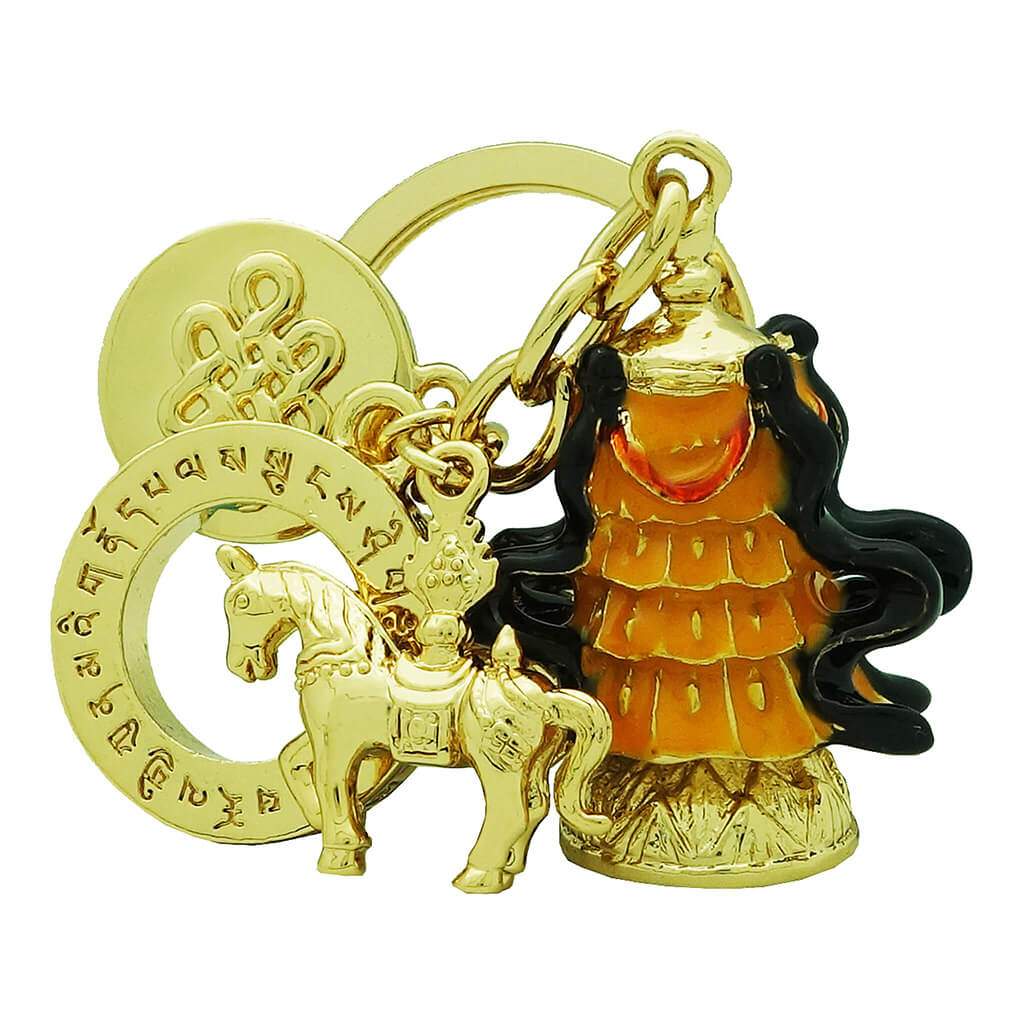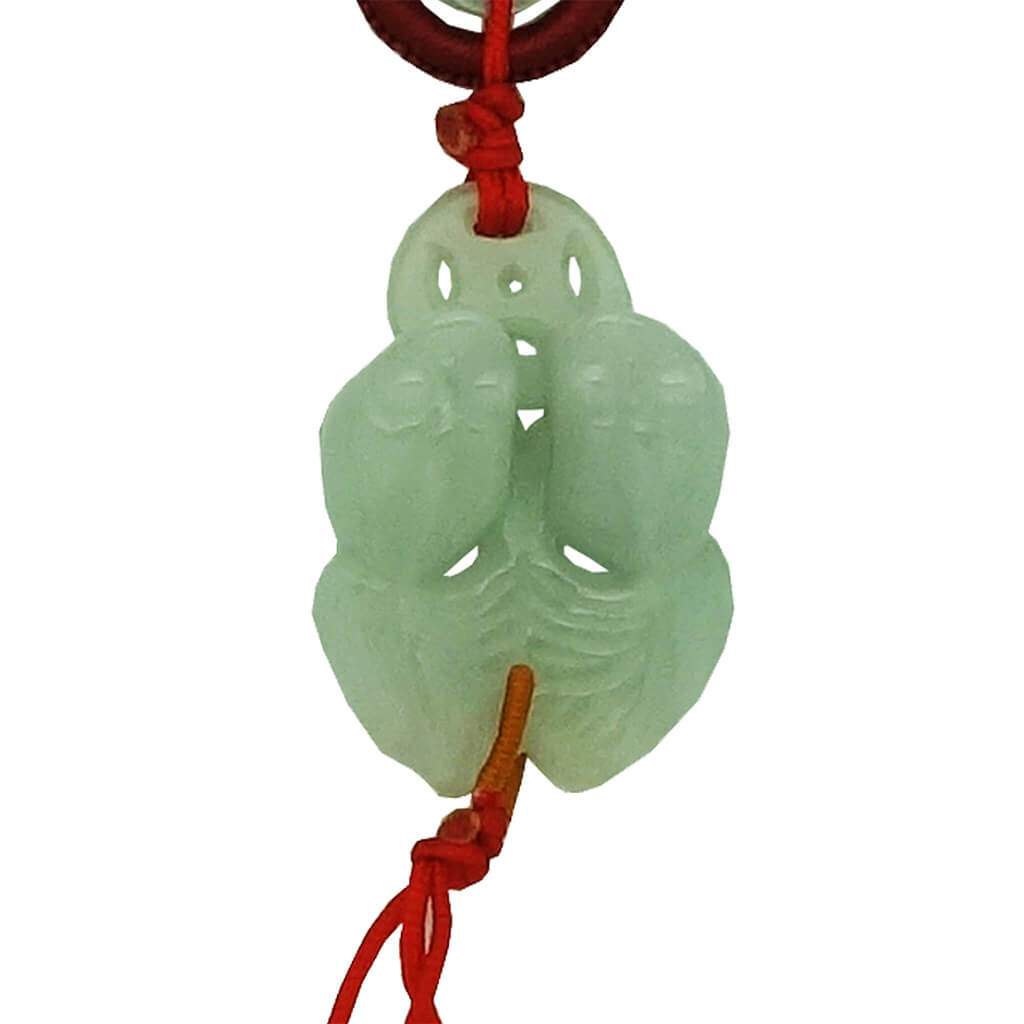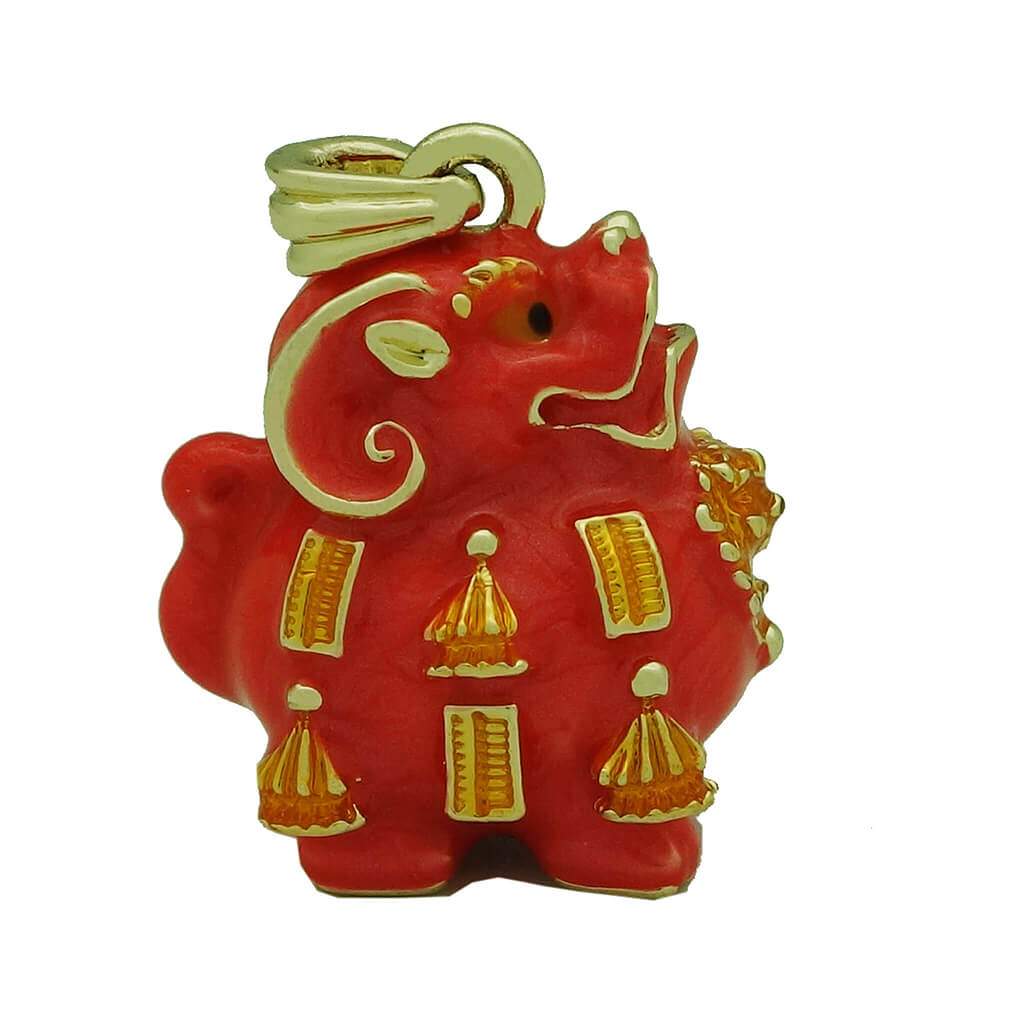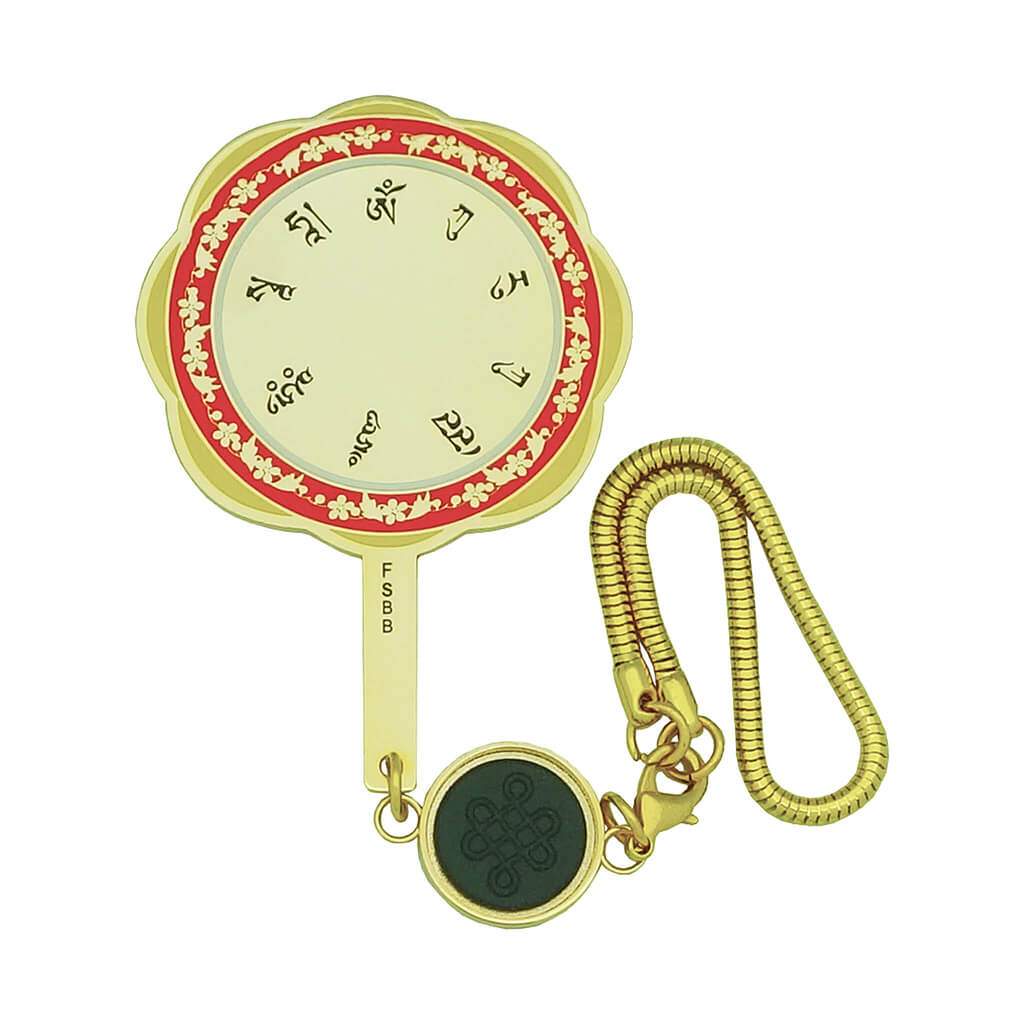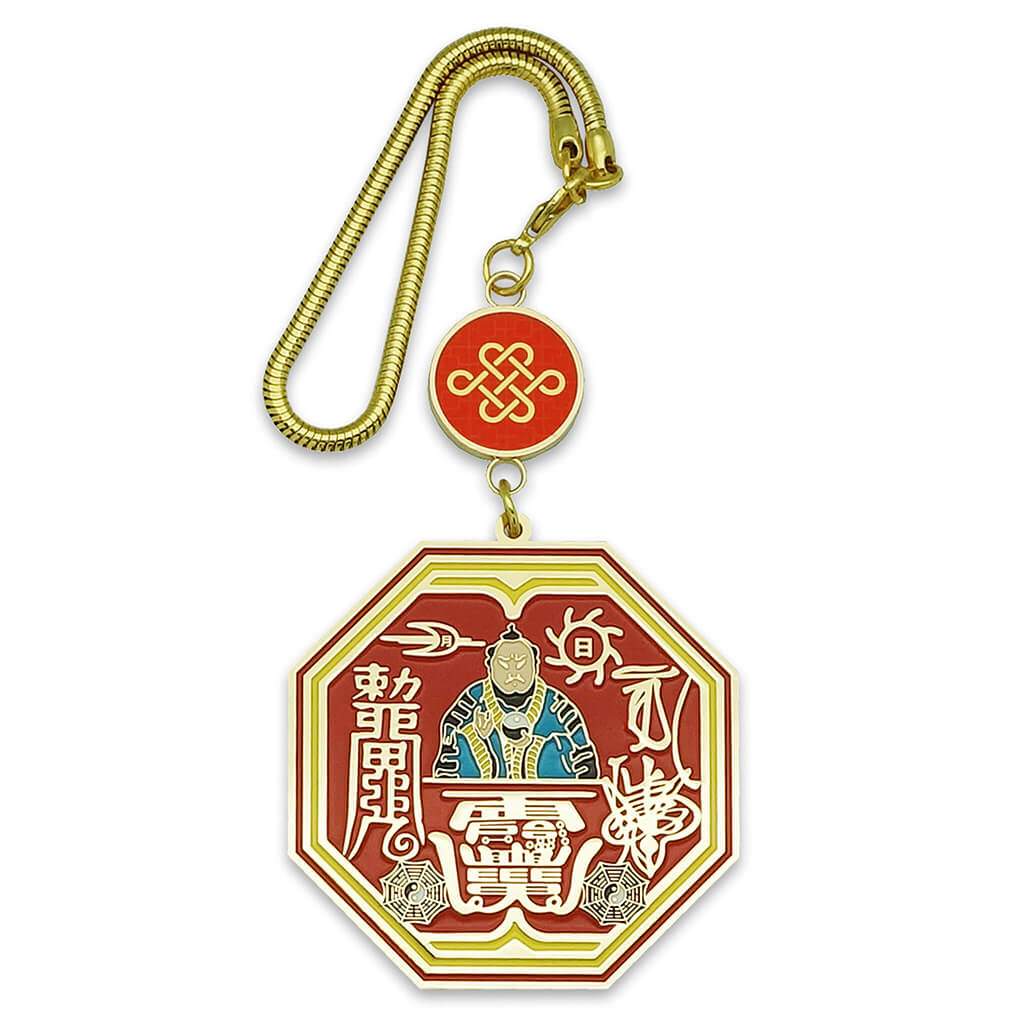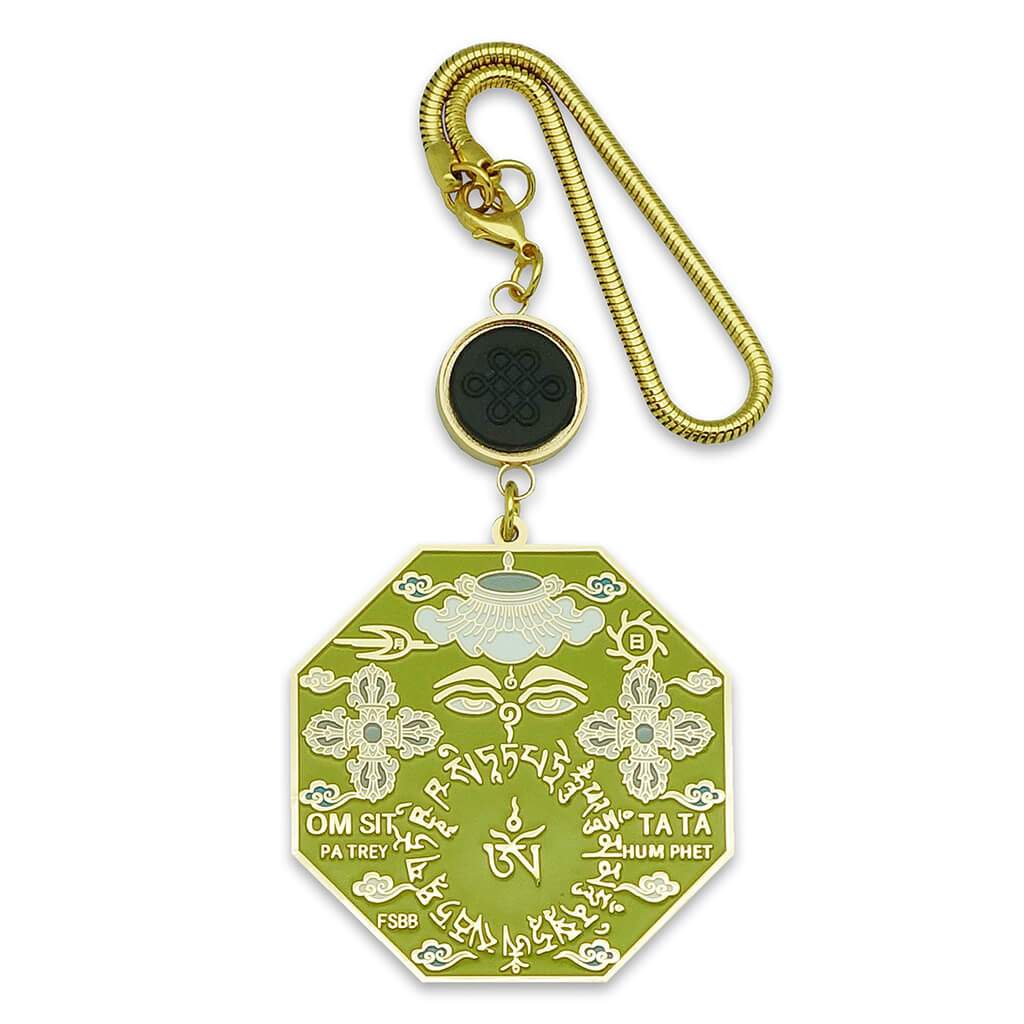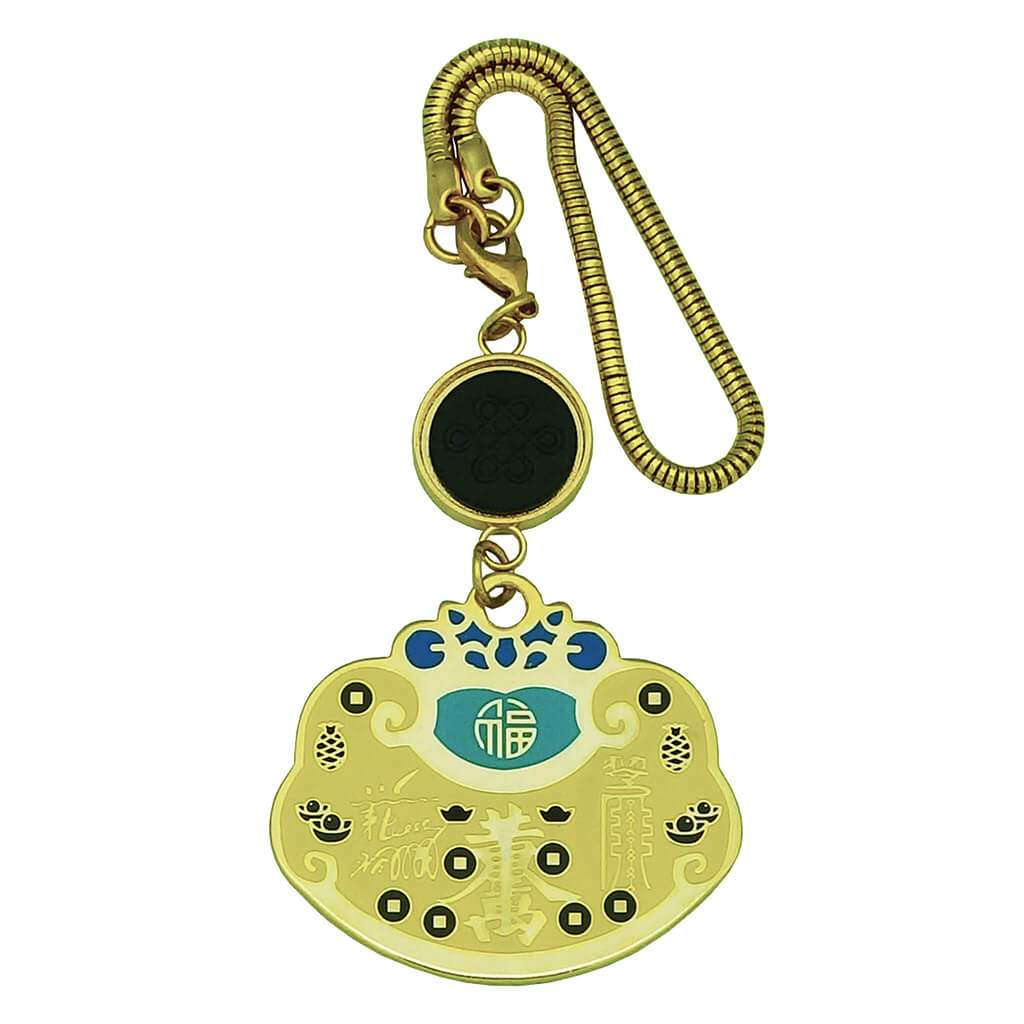Astounding in esthetics, this unique design captures the amazing bond between the Victory Banner and the Windhorse. The Victory Banner (also known as victory sign) belongs to one of the Eight Auspicious Objects. A powerful symbol of triumph, it is a cylinder of cloth with five rows of folded silk valances. One can display the Victory Banner to signify triumph over evil, disagreements, disharmonies, obstacles and anger. It is also a strong symbol of wealth recovery, suitable for those who had gone through bad and trying times before. It is a strong remedy to remove all kinds of sufferings. On the other hand, the Windhorse possesses endurance, strength, swiftness and obedience with connotations of success in attaining whatever goals one has set by strengthening inner confidence levels. A wishgranting jewel on its saddle, a jewel that is surrounded by radiating rays of bright light symbolizing peace, prosperity and harmony. The windhorse will allow you to ride through the victorious winds of nobility with less obstacles. Empowering the amulet is the mantra ring inscribed with 3 sacred mantras of good fortune, immunity against loss and shielding off dark forces. The sacred mantras provide a special channel to the cosmic realm to invoke divine help. Inspired by the need to activate its true potential and power, a shy energy infused tag is hidden under an exquisite pendant of the mystic knot. This stunning amulet constitutes a meaningful and prestigious gift.
Note: This amulet is energy infused and emits energy unendingly. Item comes with certificate of authenticity.
What the Victory Banner and Windhorse symbolize?
The victory banner (also known as victory sign) belongs to the Eight Auspicious Objects. It is a sign that consist of a cylinder of cloth with at least three rows, but generally several more, of folded silk valances. The cloth is stretched over a wood frame, and crowned with a pommel which is often adorned with four silk ribbons.
In Sanskrit, the banner or sign of victory is known as the dhvaja, meaning standard, flag or ensign. Originally, the victory banner was a military standard carried in ancient Indian warfare, and bore the specific insignia of its champion. In Buddhism, the flag of victory also denotes Buddha’s triumph over the four Maras (evil), who personifies hindrances on the path to spiritual realization. The four Maras are: Mara of emotional defilements, Mara of passion, Mara of death and Mara of divine pride and lust. It was adopted as an emblem of the Buddha’s victorious enlightenment and his vanquishing of the armies of Mara. The hosts of Mara personify defilements. Victory banner signifies methods of overcoming these defilements:
- development of wisdom and meditation
- taking refuge in Buddha
- abandoning false views
- developing spiritual aspiration
- developing selflessness
- generating formlessness, emptiness and desirelessness
The victory banner symbolises the victory of the activities of one’s own and others’ body, speech and mind over obstacles and negativities. It also stands for the complete victory of the Buddhist Doctrine over all harmful and pernicious forces. Furthermore, the victory banner also is the attribute of many deities, including the Wealth Deity Vaisravana who holds the jewel spouting mongoose together with the Victory Banner, symbolising possession of wealth through victory. It is a symbol of victory over all disagreements, disharmonies and hindrances, so that it can bring about permanent, enduring happiness. It is also said to denote triumph over anger and aggression.
On the other hand, the Windhorse (rlung-rta) is the heavenly representation of the horse. It is originated from Tibetan culture and later embedded into Tibetan Buddhism. In Buddhism, its element belongs to the “wind”. Unlike the theories of Five Elements in Feng Shui, “wind” is considered as an element by itself. It is known as windhorse due to its ability to gallop in the winds and break the stillness to ride rapidly across all the directions to the heaven. It provides the energy to the wind and brings positive feng shui to our spaces rapidly and inexhaustibly. It symbolizes the mobility and speed of teh cakravatin. It is the ultimate symbol of accomplishment and achievement in life. It has the ability to fulfill our wishes because it carries them to the heaven and obtain blessing for us from deities and protectors to bring good fortune and remove obstacles. In connection with the abandonements of the Buddha, the windhorse is depicted wearing golden and precious ornaments as a symbol of Buddha’s faith horse Kanthaka, who died of a broken heart when his master renounced his kingdom.
The Tibetan astrological system names 4 categories of personal vitality:
- Life Energy
- Health
- Personal Power
- Succcess
The Windhorse actually is a connotation of these categories combined together to form a positive energy that eliminates hindrances caused by illness, misfortune, demonic and planetary influences. The energy of the wind should never be underestimated because it channels psychic energies of the body which the mind can ride. A puja can invoke the windhorse on the mornings of waxing moon.
In feng shui, victory horses are associated to fame. Fame luck is an important aspiration of life as it is indirectly related to increasing income luck in your career life. Businessmen, employees and Hollywood artistes are likely to crave a lot for fame luck to ensure their fortune continue to grow exponentially, especially in this highly competitive environment. The horse is men’s best friend too besides the dog and is extremely loyal. Images and figurines of the horse is great gift to usher in success, especially great for well wishers for your business counterparts or relatives. The horse either in walking posture or running gestures represents grandeur and speedy climb to fame and success.

